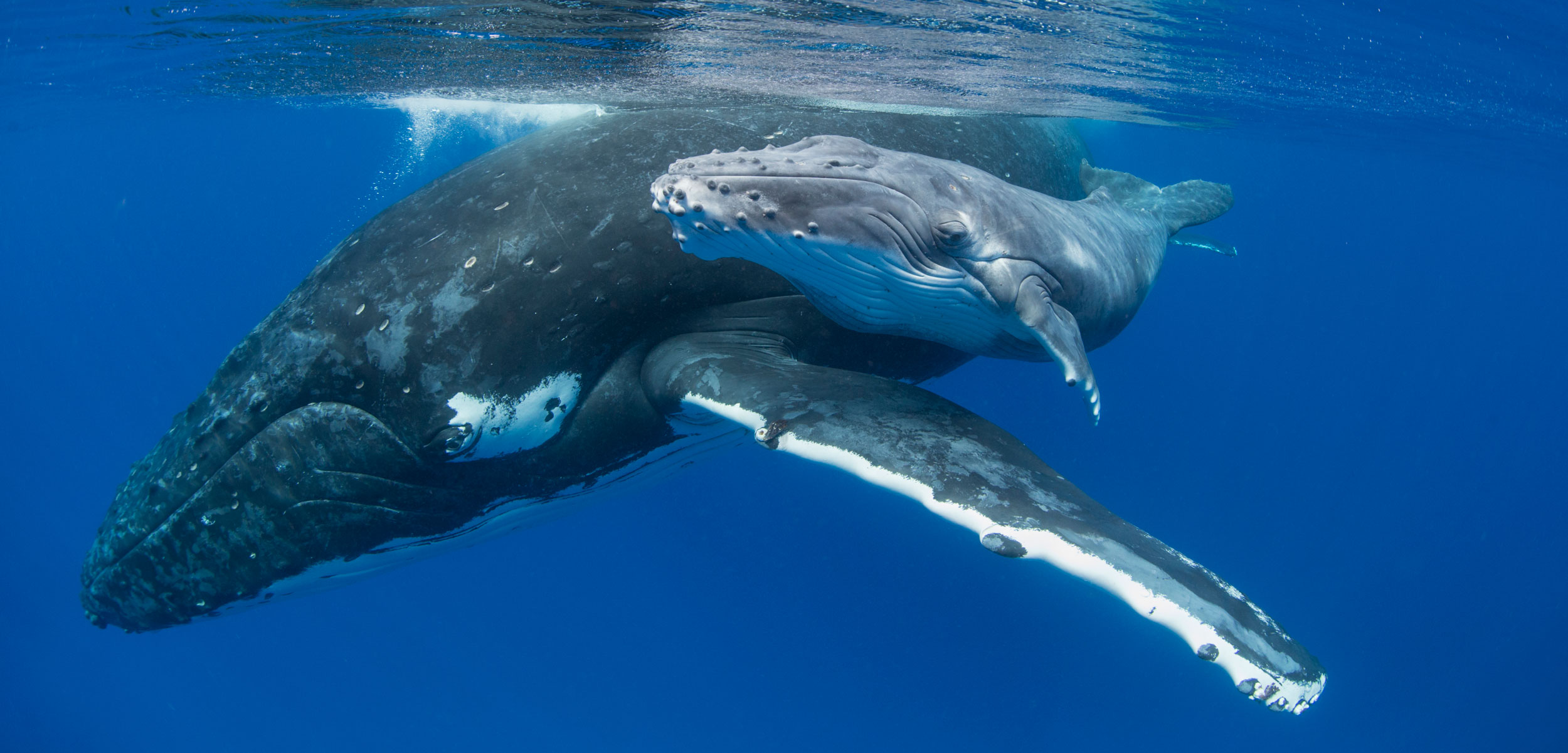Humpback Moms Need a Quiet Place to Nurse
Ship noise and development could disturb nursing humpbacks during a crucial time.
Article body copy
Let’s just deal with the obvious question: yes, whales have nipples. They’re normally inverted, but at a calf’s nudge the nipple pops out and shoots milk into the baby’s mouth. Surprisingly little gets lost in the water because whale milk is high in fat—up to 50 percent—so it’s as thick as sour cream.
Baby humpbacks need hundreds of liters of this super-milk every day to pack on enough pounds for the 3,000-to-4,000-kilometer-long migration they begin just a few months after birth. Accordingly, the calf needs to nurse a lot. And the best nursing time is had floating stationary in a sheltered place.
One humpback breeding ground, Exmouth Gulf in Western Australia, is facing a slate of pending developments, both industrial and recreational. They include deep-water wharves and onshore support for offshore oil and gas drilling, as well as a trial for a recreational tour. More boats and ships in the area could pose particular problems for nursing moms: there’s the heightened risk of collision, but also more noise. The latter, in particular, might be a more insidious problem.
University of Hawai‘i marine biologist Lars Bejder attached suction cup tracking tags to 16 nursing humpbacks in the gulf and recorded their movements. He found that lactating moms spent about eight hours a day resting, and for good reason.
For six months, a humpback mom produces more than 350 liters of milk per day, all while eating nothing herself. Humpbacks spend half the year bulking up at their feeding grounds near the Earth’s poles, and the other half at their breeding and resting grounds closer to the equator. Warmer equatorial waters are safer for calves as there are fewer predators, such as killer whales, but there’s also less food. The mom must reduce her own energy output as much as possible as she converts her own body fat into milk.
“That energy transfer from the moms to the calves is absolutely critical,” Bejder says. Mom “has to give birth, use [her own] reserves to fatten up the calf, and, after that, the calf has to be big enough to migrate.” There’s no room for waste. Disruptive noise could force the mother to move more often, which is energetically costly in two ways: it burns her fat reserves and interrupts the calf’s feeding.
John Calambokidis, a marine biologist with the Cascadia Research Collective, in Washington State, says the research is especially exciting because it’s making use of new technology, such as miniaturized tracking tags, to peer closely into the whales’ daily lives. “These tools have opened up new ways to discover what these animals are doing underwater,” he says.
Calambokidis says the discussions of disruptive noise shouldn’t overshadow the risk posed by ship strikes, which is also elevated for nursing mothers. A key finding from the study, he says, was that resting females tend to drift roughly four to six meters below the surface—right where they would be struck by vessels. In Australia, humpbacks account for 59 percent of all recorded collisions between ships and whales.
Just how the proposed projects in Exmouth will affect the whales is critical to understand before the developments go ahead, says Bejder. This particular population of humpbacks, he says, is one of seven major subpopulations in the southern hemisphere. Industrial whaling cut this population down to just 300 individuals, but it has since recovered to thousands. Bejder suspects a big reason for the recovery was havens like Exmouth, where mom could catch a breather and babies could get a fin up.

